- News
- Reviews
- Bikes
- Accessories
- Accessories - misc
- Computer mounts
- Bags
- Bar ends
- Bike bags & cases
- Bottle cages
- Bottles
- Cameras
- Car racks
- Child seats
- Computers
- Glasses
- GPS units
- Helmets
- Lights - front
- Lights - rear
- Lights - sets
- Locks
- Mirrors
- Mudguards
- Racks
- Pumps & CO2 inflators
- Puncture kits
- Reflectives
- Smart watches
- Stands and racks
- Trailers
- Clothing
- Components
- Bar tape & grips
- Bottom brackets
- Brake & gear cables
- Brake & STI levers
- Brake pads & spares
- Brakes
- Cassettes & freewheels
- Chains
- Chainsets & chainrings
- Derailleurs - front
- Derailleurs - rear
- Forks
- Gear levers & shifters
- Groupsets
- Handlebars & extensions
- Headsets
- Hubs
- Inner tubes
- Pedals
- Quick releases & skewers
- Saddles
- Seatposts
- Stems
- Wheels
- Tyres
- Health, fitness and nutrition
- Tools and workshop
- Miscellaneous
- Cross country mountain bikes
- Tubeless valves
- Buyers Guides
- Features
- Forum
- Recommends
- Podcast
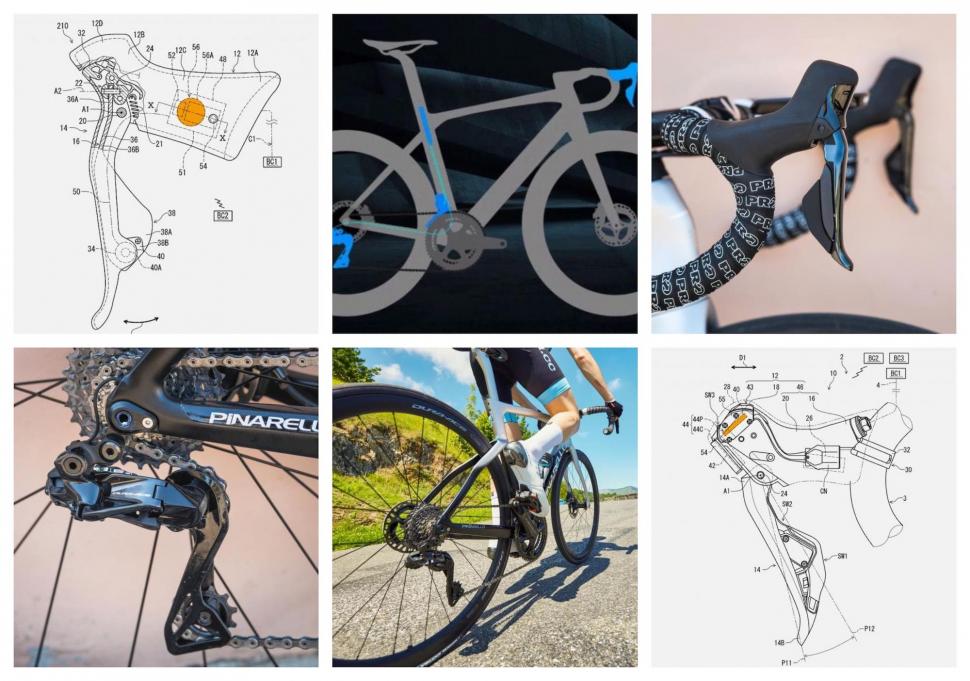 Patents Shimano Dura-Ace 9200 opener - 1
Patents Shimano Dura-Ace 9200 opener - 1What do recently published patents tell us about the future direction for cycling tech innovation?
Published patent applications can tell us a lot about the directions cycling technologies may be heading, and here we're going to see how those filed by Shimano in the lead up to the launch of the Dura-Ace 9200 groupset in August 2021 gave us an early indication of what was possibly on the way.
Ever since the pandemic erupted in 2020, bicycle sales have surged. In the UK alone, bicycle sales were up 63% year-on-year and cycling increased by as much as 200% during the first lockdown.
The events of the last 18 months certainly have not squeezed the brakes on cycling tech innovation either. In 2021, Shimano celebrated their 100 year anniversary and with it released the latest offering of their top-spec, road-specific groupset, Dura-Ace 9200.
This version of Dura-Ace arrived with some notable changes. The newest developments include 12 sprockets for riders to work with on the cassette, significantly reduced shifting times and refinements for disc-brake systems. The most significant development, however, came in the form of semi-wireless gear shifting.
Read our review of Shimano's Dura-Ace R9200 groupset here
Being valuable technology that likely saw vast research and development (R&D) investment, Shimano would have been keen to protect as many new inventions in Dura-Ace 9200 as possible by using patents.
The disc brake version of Shimano's latest Dura-Ace groupset is semi-wireless; there are no wires linking the shifters with the derailleurs or their battery
These patent applications that were filed by Shimano were, or will be, made available to the public 18 months after filing. We are therefore able to use this product launch as a case study for what published patent applications tell us as to the directions cycling technologies may be heading.
Of course, far from every patent application leads to a product being developed fully and eventually released. Shimano files dozens every year in an effort to protect their R&D. For example, they filed a patent application for a 14-speed drivetrain way back in 1996 and was granted that patent in 1999, and there are many more examples of designs that have never come to market.
First clues
Some of the first clues that Shimano were seriously heading in the wireless direction emerged in October 2017, with the publication of US patent application US 2017/0305490 A1.
The application disclosed a wireless communication unit at one of the base members (the shifter hood) and the brake operating member (the brake/shifter lever). These two alternatives are shown below, with the coin cell that powers such units highlighted in orange.
Shifter schematics from US 2017/0305490 A1 show two different locations for a wireless communication unit in both hydraulic-brake (left) and cable-brake (right) shifters, the coin cell for each highlighted in orange
With the wireless shifting technology clearly being at an early developmental stage, it was crucial that Shimano protected their ideas at the broadest and most conceptual level. Embodiments disclosed the technology for both hydraulic and cable methods of braking, for road bicycles (as shown above) and time-trial bicycles (below), and for a wide range of locations of the wireless communication unit.
Another schematic from US 2017/0305490 A1 shows the location for a wireless communication unit on a TT shifter, the coin cell highlighted in orange
This style of application was likely due to Shimano wanting to remain flexible to any developments in the market by competitors, as well as to cover all possible embodiments of a product that was very much in its infancy. In fact, neither of the two locations of the coin cell as shown above would go on to make it into Dura-Ace 9200.
A (semi-)wireless approach
Increasingly major clues as to the eventual direction that Shimano were taking were made public in March 2021. Another US patent application, US 2021/0061413 A1, disclosed what would eventually go on to be the so-called semi-wireless system that Dura-Ace 9200 employs.
A schematic from US 2021/0061413 A1 shows what would become the semi-wireless system of Dura-Ace 9200
In the new semi-wireless design, shifting signals are to be sent wirelessly between shifters and the derailleurs, though with the rear and front derailleur wired together and powered by a single battery located in the bicycle frame.
Shimano’s Dura-Ace groupset has had electronic shifting options since 2009 (when Dura-Ace 7970 was launched), but always with wires between shifters and derailleurs. In the disc brake version of the released product, shifting signals for both the front and rear derailleurs are sent wirelessly to the rear derailleur (shifts are still wired on the rim brake version).
However, a broad drafting approach appeared to cover embodiments in which shifting signals are sent to the front and rear derailleurs separately. This patent application told us Shimano had at least an interest in a wireless groupset. It was however still too early to be certain of an upcoming product containing the technology.
Wireless shifting isn't new in the world of cycling, of course. US-based company SRAM released fully wireless eTap shifting back in 2015. In eTap systems, both front and rear derailleurs use individually mounted batteries, and each communicates wirelessly with the shifters.
With SRAM’s wireless system already on the market, Shimano will have needed to navigate around SRAM’s existing patent portfolio to be able to launch and patent their own product.
An upcoming launch
The patterns in which patents are filed and subsequently published can also provide a valuable window into the technological output of innovating firms. For example, the publication of three US applications from Shimano – US 2021/0139102 A1, US 2021/0139105 A1 and US 2021/0144453 A1, all in May 2021 – provided the strongest suggestion that a product launch was on the horizon.
All three disclosed a refined location for the power supply (coin cell) and circuitry: at the end of the shifter furthest from the handlebars. The image below highlights this location of the power supply, again in orange.
Filed back in 2019, these correlate to the exact location of the shifter batteries in Dura-Ace 9200. The relatively narrower and more focused disclosure, coupled with the flurry of applications aiming to protect very similar features, was an indication that Shimano were firmly set on a location for the power supply and circuitry, and a product launch was in the pipeline.
A schematic from US 2021/0139102 A1, US 2021/0139105 A1 and US 2021/0144453 A1 shows the finalised location of the shifter power supply and circuitry in the Shimano Dura-Ace 9270 lever
Whilst these published applications can provide great insight, the 18-month delay after a patent application is filed until publication means that the public is usually first introduced to the exact features of a product on release day. It will be a while until we see any additional patent applications that could have been filed in the run-up to the Dura-Ace 9200 launch in August 2021.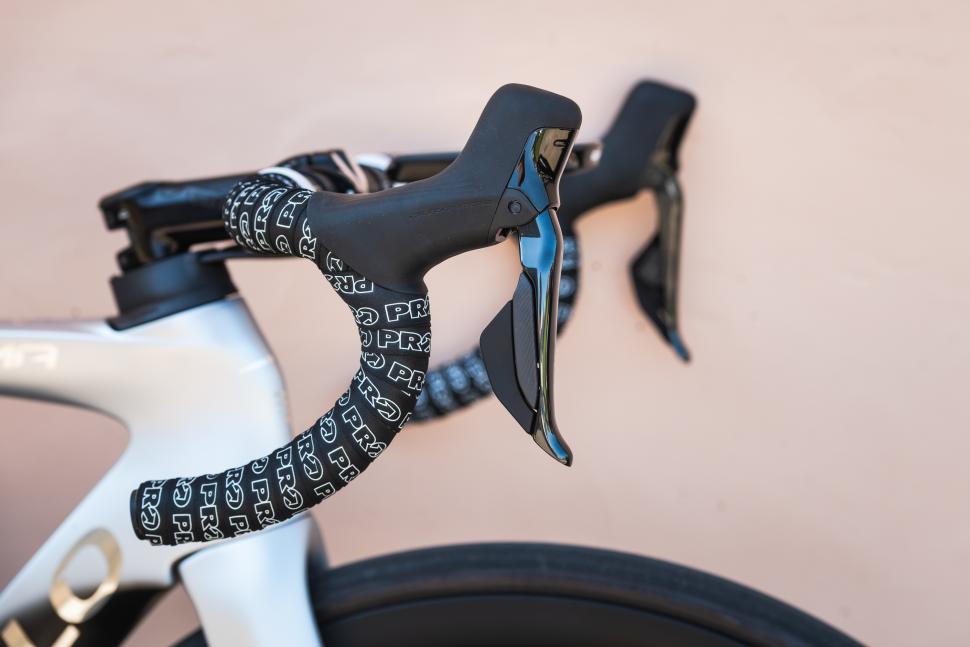
The cycling world is clearly growing rapidly in many directions, be it professional racing or casual commuting, and patents provide some insight into what cycling innovators believe those directions may be.
In what was already a competitive market, intellectual property (IP) rights, such as patents, are proving increasingly crucial to companies wanting to gain a foothold and establish their position in the market. The content in, and patterns of, the publications of these IP rights can give major hints into what technologies bike brands have up their sleeves.
These clues can range from an early developmental stage right through to a product launch, but with the delay in publication allowing for brands to keep some features secret until the big day.
Latest Comments
- mark1a 1 hour 45 min ago
I do a fair amount of my own maintenance on the fleet, for me it's not really about saving money, especially once the equipment cost is taken into...
- Bungle_52 3 hours 12 min ago
We can't have that can we. Much better to risk killing vulnerable road users. Less damage to the cars.
- Bungle_52 3 hours 15 min ago
I've just had the outcomes from 4 reports I put in last week. 3 of them were for driving at me on my side of the road. Two I had to brake and...
- Cycloid 3 hours 34 min ago
I have seen this image several times and can see no scientific reason for the conclusion it supports. I have been unable to trace it's source....
- Rendel Harris 3 hours 58 min ago
Sounds massive, doesn't it, but whilst we should obviously be aiming for as little carbon release as possible that's the equivalent of what...
- Gbjbanjs 4 hours 18 min ago
“In cycling, even a single PSI can make a difference...". More elitist writing nonsense from road.cc
- David9694 4 hours 23 min ago
This is a bit more like it: Hereford western bypass plan: Councillor Toni Fagan comment...
- David9694 4 hours 27 min ago
Recap: Deansway crash sees car hit into wall in Worcester https://www.worcesternews.co.uk/news/24943188.recap-deansway-crash-sees-...
- chrisonabike 5 hours 21 min ago
(Just a parking grumble - not a "paying fees" scenario) - here was one of this lunchtime's helpful drivers. Removals (?) guy parked right across a...
- Mr Blackbird 6 hours 48 min ago
Josh Tarling is an excellent prospect. Had he not punctured in the Olympic TT, he would have won at least a silver medal. A possible future senior...

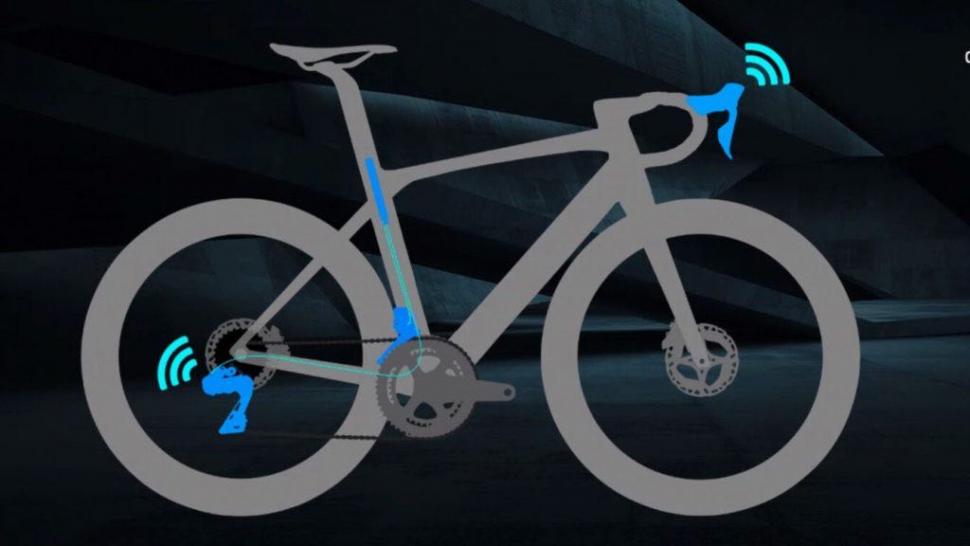
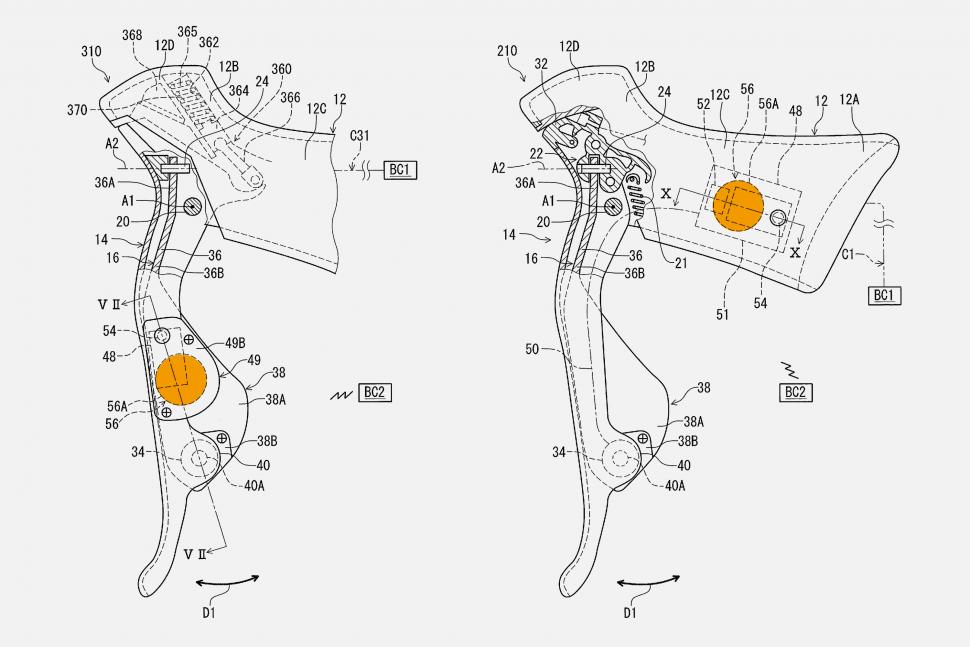
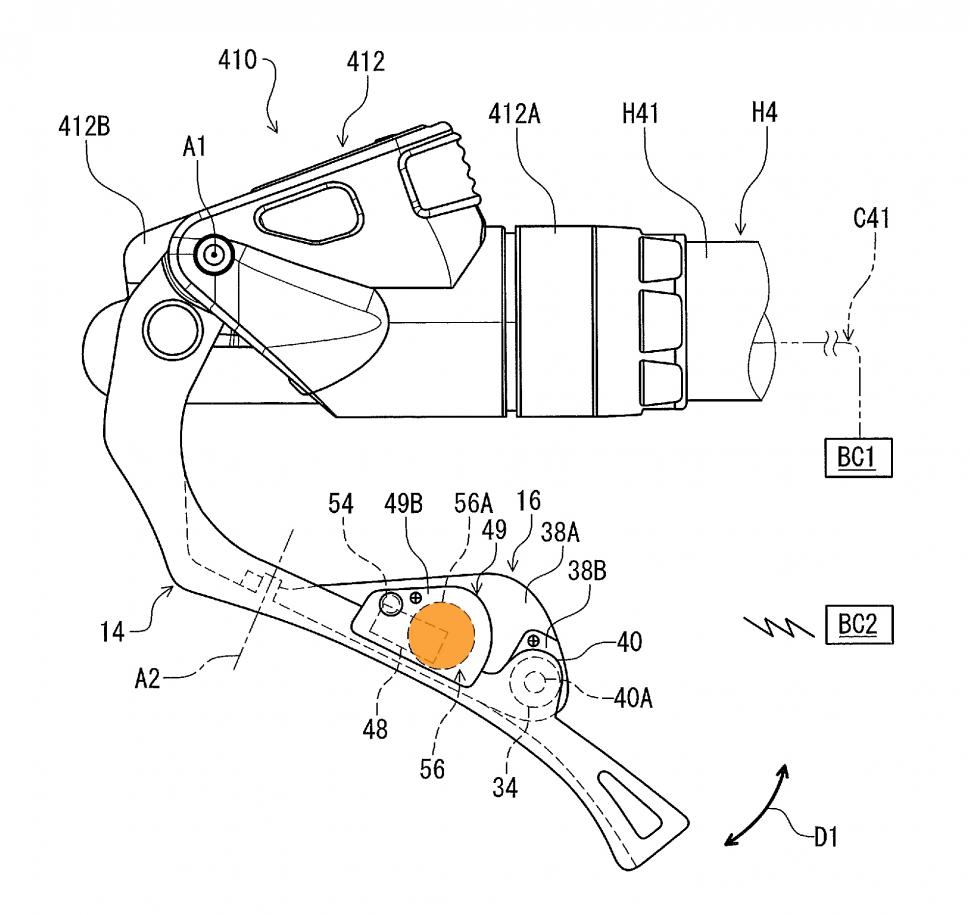
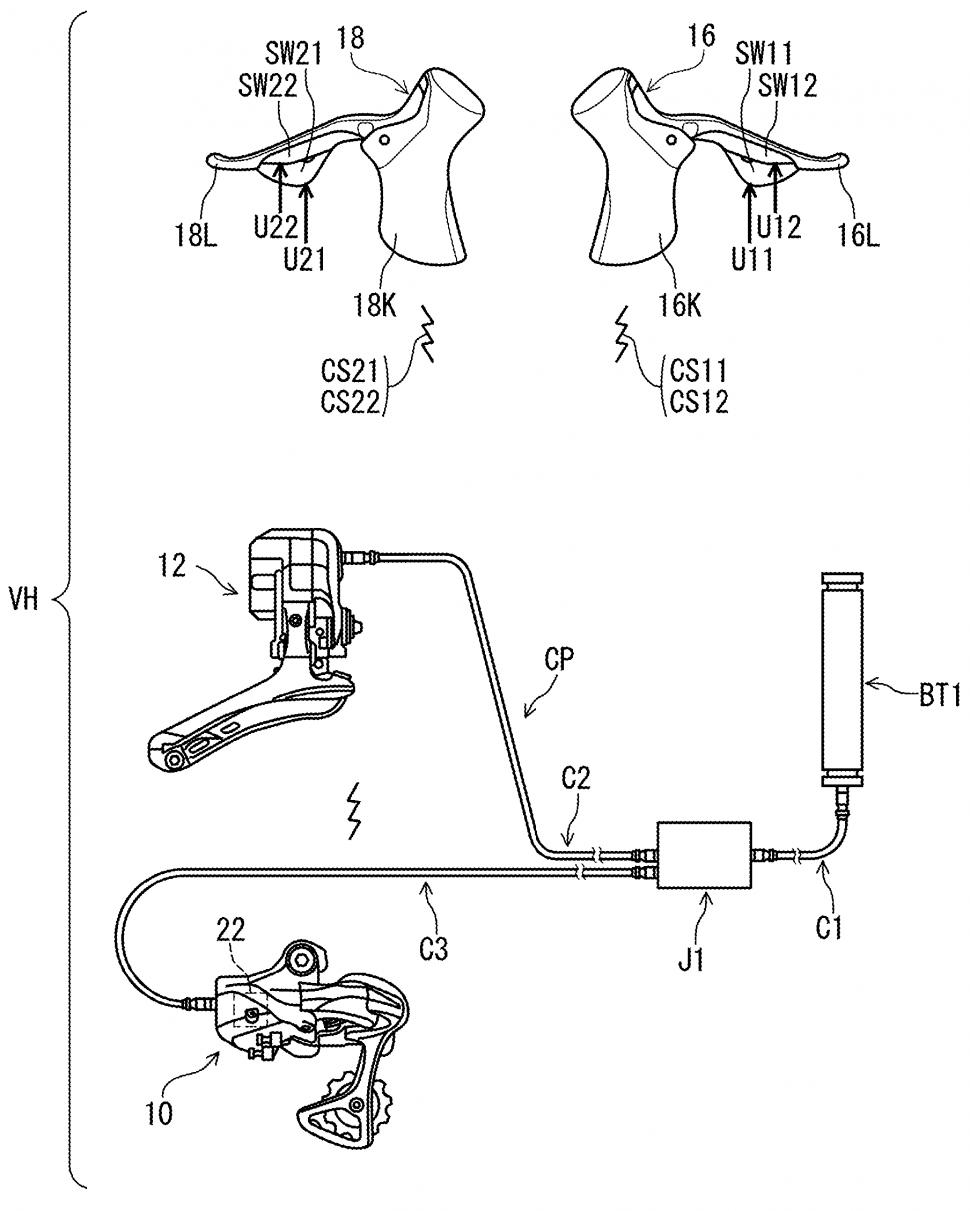

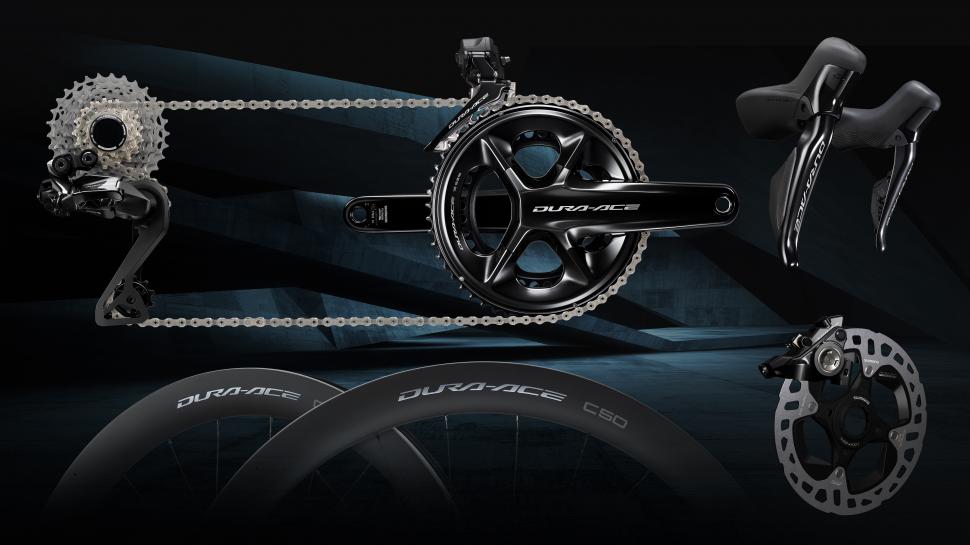
Add new comment
4 comments
Who cares? Semi wireless, or eventually, entirely wireless, is just another thing to go wrong while riding, and another thing that will cost more and more money to buy new and to upkeep. Geez, I've had problems with wireless computers lasting about 5 years on average over several brands, somehow we're all going to get suckered into wireless shifting system? Except a wireless computer is cheap, it will not be so with wireless shifting components.
As it's replacing the wires it's actually a different thing to go wrong, rather than an additional one...fairly sure you're not going to be forced to buy it if you don't want it.
I agree with Froze, but only on the (being Forced) ivebeen using Sram Red (Wire Less) for over 8 years, (still on the same lever battery) wonderful (Probably blow up now) my problem is being forced to go disc brake with 9200, ive got 9100 its good, also have Super Record EPS fantastic, with 9200 2 less wires but heavier, and that price it ridiculous
So, your headline: "What do recently published patents tell us about the future direction for cycling tech innovation?"
Nothing, since the entire article is about Shimano's travel towards a semi-wireless group set.
one solitary theme - "shimano" and "semi-wireless" is hardly indicative of cycling tech innovation is it....